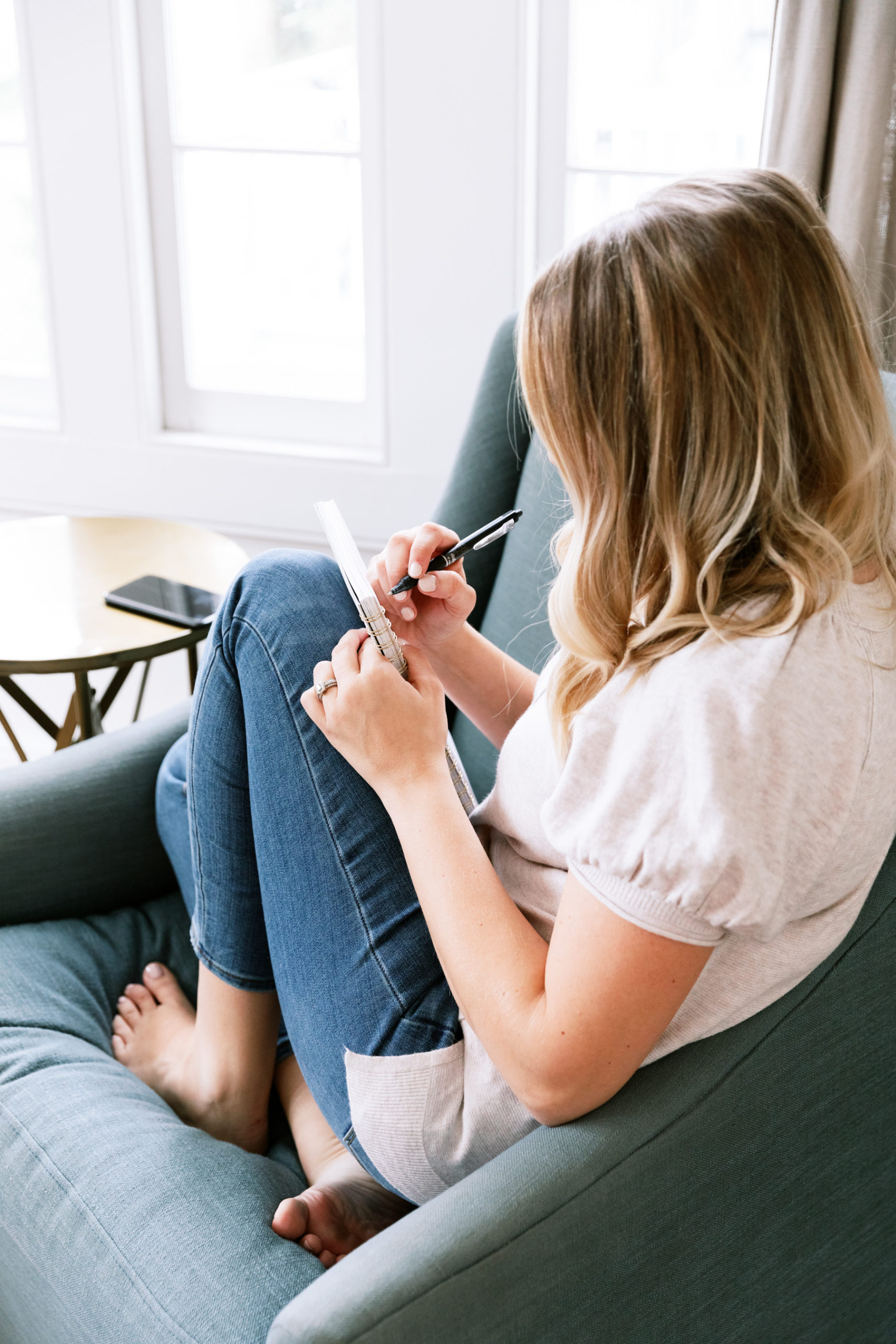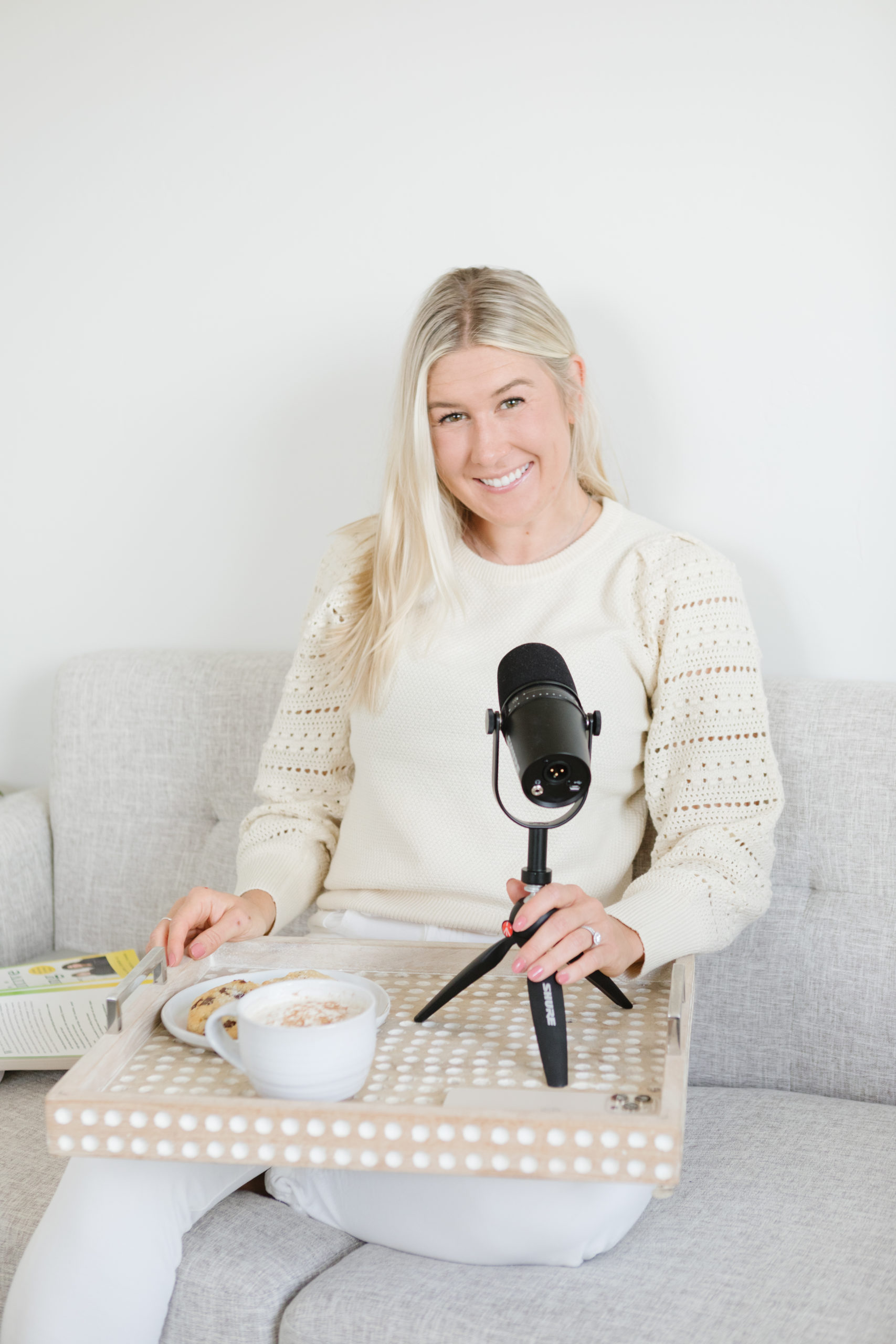Unlocking Food Freedom: 5 Key First Steps To Beat Binge Eating

Written By:
Category:
Ryann Nicole
Struggling with binge eating? You’re not alone, and there’s a way to start feeling better. This post will show you some practical steps you can take to get started on your journey to recovery. But first, remember, if you think you have a binge eating disorder, it’s important to talk to a doctor. This post offers tips, but it’s not a substitute for professional help. Now, let’s dive into these steps to beat binge eating!
First Steps To Beat Binge Eating
Beginning recovery can be both exhilarating and intimidating. The key to success lies in taking that first step, even if it’s a small one. It’s essential to remember that perfection is not the goal; progress is. So, don’t let the fear of imperfection hold you back. Embrace the learning curve, celebrate your victories, and don’t be discouraged by setbacks. By taking it slow, you allow yourself the space to grow and the chance to savor each moment of the journey. So, be kind to yourself, trust the process, and let your journey unfold naturally. Here is where to start:
01. Eat Regularly
Eating regularly might seem counterintuitive when dealing with binge eating, but it’s a game-changer. By nourishing your body with regular, satisfying meals, you can combat the restrictive eating that often triggers binges. Skipping meals can lead to intense hunger and impulsive overeating later in the day. Make it a habit to enjoy three healthy meals a day—breakfast, lunch, and dinner—incorporating protein, fats, carbohydrates, and colorful fruits and vegetables. You can even set alarms or reminders on your phone to help you establish a consistent eating routine. And don’t forget to include nutritious snacks between meals for that extra energy boost!
02. Put All Food on a Plate
Using a plate when you eat may seem like a small thing, but it can make a big difference as you work on getting better. Binge eating often means you eat without really thinking about it. When you put your food on a plate, it gives you a clear limit and helps you see your food better. This way, you can pay more attention to what you’re eating. It helps you enjoy each bite, savor the flavors, and understand when you’re full. This simple trick can break the cycle of chaotic and impulsive eating that comes with binge episodes. It creates a more organized and controlled way to eat, which is important for stopping binge eating.
03. Reflect and Learn
Remember, if a binge occurs, don’t be too hard on yourself. Instead, use it as an opportunity for self-reflection. This reflection can help you understand why the binge happened and how to prevent it in the future. Binge eating is a symptom, not the root cause. Journaling is a fantastic way to explore patterns and discover what triggers your binges.
Create a comfortable environment, perhaps with soft music, to reflect on your feelings leading up to the binge, during the binge, and afterward. Focus on your emotions rather than dwelling on the binge itself. If traditional journaling isn’t your style, there are plenty of apps available, some even with password protection, that allow you to document your thoughts and emotions from your phone. Here are some reflection questions to consider after a binge:
- Did I nourish my body adequately today and yesterday?
- Did I criticize or feel guilty about my food choices, or did I deny myself something I truly wanted?
- How well did I manage my emotions, and what about my feelings toward my body?
04. Start Reading and Learning About Binge Eating
Learning about binge eating is a big step in getting better. It’s like having a helpful map when you’re in a place you don’t know well. You can do this by reading helpful books, listening to podcasts by experts, or following people on social media who inspire you. These things give you important ideas, plans, and a sense of belonging. They teach you not only the science and psychology behind binge eating but also share stories and tips from people who’ve been through it.
In this world of knowledge and shared experiences, you’ll find reasons to keep going, better understanding, and a clear path to becoming a healthier, happier you. So, start reading, listening, or following these sources to make yourself stronger on your journey to recovery. Here are some resources to begin with:
Books to Read:
Podcasts to Listen to:
- The Food Freedom Lab
- Food Psych
Social Media Accounts to Follow:
- @ItsRyannNicole
- @ThoughtfullyFueled
- @bodyimage.binge.coach
- @Isabels.Plate
These are great places to start your journey to recovery and gather more insights and support.
05. Find Support
Remember, you don’t have to face binge eating alone. Building a strong support system is one of the most effective ways to heal. Your support network may include parents, friends, a partner, family members, therapists, doctors, or support groups. Ensure that those you reach out to genuinely want to see you get better, refrain from negative comments about your body, and are willing to offer daily support. Together, you can create a team that provides the accountability and encouragement you need on your journey to recovery.
Don’t have anybody for support? Join my free support group here!
Your journey to overcome binge eating is a courageous one. Remember, healing takes time, patience, and self-compassion. You are not alone in this. With these steps and the support of your network, you can take control of your relationship with food and work towards a healthier, happier you. Keep moving forward on the path to recovery, and know that there’s always hope. You can overcome binge eating and embrace a brighter future.
Keywords: binge eating, binge eating disorder, overcoming binge eating
Struggling With Body Image? Check These Out:
- 096. Trusting The Binge Eating Recovery Process: How To Keep Pushing Forward When Things Are HARD (and clothes are getting tight)
- 083. What I do on bad body image days (so it doesn’t ruin my day!)
- 072. Why You Need To Accept Your Body TODAY (even if you don’t love it)
10 Things To Add To Your Coping Box
Just so you know, I do review everything I recommend. When you buy through links on this page, we may earn a commission.
An emotional coping box, also known as a self-soothe or comfort box, is a personalized collection of items that can help individuals cope with difficult emotions, stress, or challenging situations. It’s a tangible and accessible resource that provides comfort and distraction during moments of distress. Here are 10 things you can consider adding to your emotional coping box:
Include items that bring you comfort, such as a soft blanket, stuffed animal, or cozy socks. These tactile objects can provide a sense of security and grounding.
Write down or print out affirmations and positive quotes that resonate with you. Reading these affirmations can help shift your mindset and promote self-compassion.
Incorporate items that engage your senses, such as scented candles, essential oils, or stress-relief lotion. Pleasant scents can have a calming effect.
Include small items like stress balls, fidget spinners, or textured toys. These can serve as a physical outlet for nervous energy and help redirect focus.
Keep a journal or notebook to write down your thoughts, feelings, and reflections. Journaling can be a therapeutic way to express and process emotions.
Include pictures of loved ones, happy memories, or items that hold sentimental value. Visual reminders of positive experiences can bring comfort and perspective.
Guided Relaxation or Meditation Resources
Include a small audio player or device with pre-loaded guided relaxation or meditation sessions. These can help you practice mindfulness and manage stress.
Playlist of Uplifting Music
Create a playlist of music that brings you joy or relaxation. Music has the power to influence mood, and having a go-to playlist can be a quick mood booster.
List of Coping Strategies
Write down a list of healthy coping strategies that work for you. This could include deep breathing exercises, progressive muscle relaxation, or simple activities that bring you a sense of peace.
Remember, the contents of your emotional coping box should be tailored to your preferences and needs. Regularly review and update the items to ensure they remain effective for you over time. The goal is to have a readily available toolkit that supports your emotional well-being during challenging moments.
Ryann Nicole
Licensed Therapist, Certified Nutritionist, and Virtual Wellness Coach
Ryann is a licensed therapist and virtual wellness coach who has assisted individuals worldwide in establishing a healthier relationship with food and their bodies.
Are You Ready to Heal Your Relationship With Food?
I understand—it can be overwhelming to figure out where to begin. Let's simplify things and have you start right here:
Why Am I Overeating?
First Steps To Stop Binge Eating
The Food Freedom Lab Podcast
FREE QUIZ
FREE GUIDE
Podcast
the food freedom lab podcast


